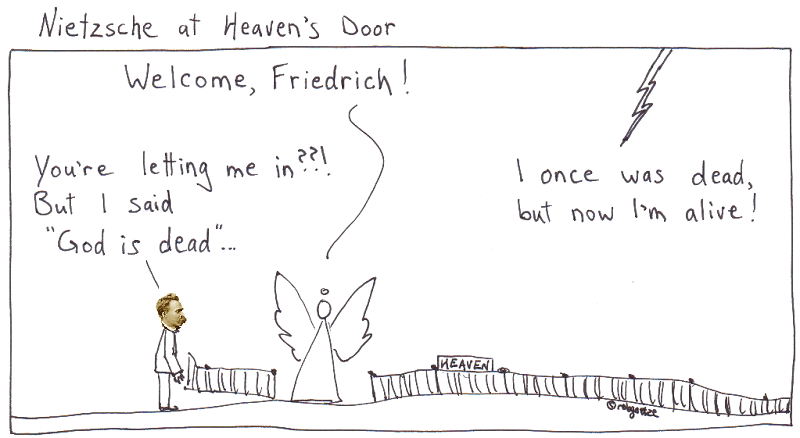Philosopher Guiseppe Fornari, writing in A God Torn to Pieces: The Nietzsche Case, makes this rather shocking claim:
“In the end [Nietzsche] was much closer to Christ than many who would claim to be Christians.”
As Adam Ericksen explains in his review of Fornari's book,
Who was the Christ that Nietzsche rejected and that many Christians do not know? It’s the Christ who says from the cross, “Father, forgive them, for they know not what they do.”
Nietzsche rejected Christ because he couldn’t believe in a God who offers this universal forgiveness. And the truth is that many who claim to be Christians can’t believe in that God either.
In fact, while many Christians demonize Nietzsche with their words, they actually agree with him with their actions.
Ouch.
Read the rest of Adam's comments here.
Note: I have not read Fornari's book yet, nor can I confirm whether or not Nietzsche is in heaven.
However, I do believe that God knows us all by name, and so the man we often refer to as "Nietzsche" is a human being named Friedrich Wilhelm Nietzsche, who is loved by God. And I believe that God is bigger than us and our ideas (and statements) about Him, and bigger than our ideas about whom we will see in heaven when we get there....



















